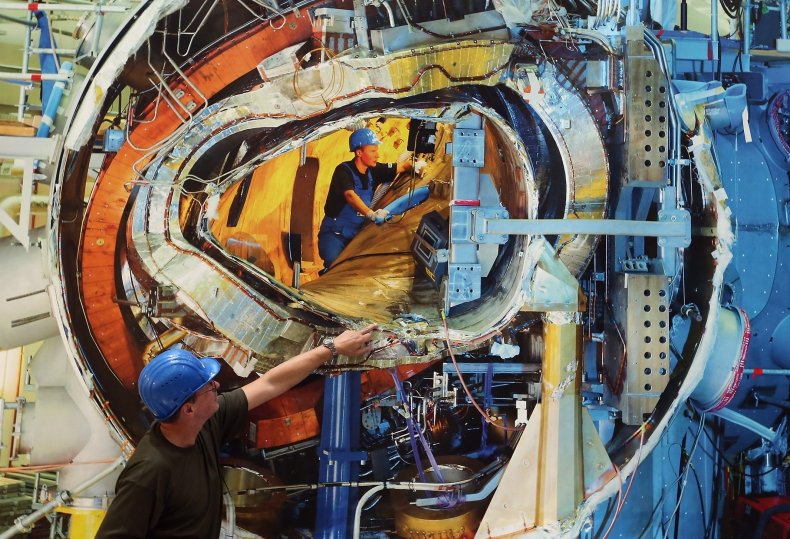BY
Private investment in nuclear fusion has skyrocketed in 2022, with the amount of funding more than doubling the industry’s entire historic investment in a single year.
The figures come from the second global fusion industry report published by the Fusion Industry Association (FIA). It shows that the amount of private investment in fusion amounts to $4.7 billion in total, dwarfing the $117 million of public investment declared by the companies surveyed. Of the total, $2.83 billion in new funding was declared in the year since the previous survey.
Nuclear fusion refers to the process of combining two atomic nuclei together, which creates one single heavier atom in addition to huge amounts of energy as a byproduct. It’s the same process that powers the sun, where hydrogen atoms are fused together under intense heat and pressure to form helium.

A photo shows the Wendelstein 7-X nuclear fusion reactor under construction in October 2013, at the Max Planck Institute for Plasma Physics in Greifswald, Germany. Nuclear fusion promises to be a clean and virtually limitless source of energy.SEAN GALLUP/GETTY
Fusion is essentially the opposite of nuclear fission, in which atoms are split apart. Nuclear fission is the process that powers modern nuclear reactors. However, fusion is thought to have several benefits over fission, such as the fact that fusion produces more energy, produces few radioactive particles, and is not self-sustaining—meaning fusion reactors won’t melt down like fission reactors potentially can.
Fusion reactors also don’t produce any greenhouse gasses, soot or acid rain, and the fuel necessary to power the reactions is abundant, according to Binus University.
Unfortunately, scientists have not found a way of viably generating electricity from fusion power. The problem is that current reactors generally use up more energy than they produce.
One example of this can be found in tokamaks, one of many nuclear fusion reactor models under investigation and one of the best-funded currently. They work by circulating a ring of plasma in which fusion can occur, producing heat in the process that can then power a turbine. However, tokamaks require powerful energy-demanding magnets in order to keep the plasma contained.
Work is nonetheless ongoing, with several other reactor types being investigated and minor breakthroughs announced every so often. Now it looks like we can expect the pace to quicken.
The FIA’s 2022 report showed that there were 33 responses to its survey this year, marking a significant increase from 23 the previous year. The report also included figures showing that the total number of private fusion companies had increased more steeply over the past five or so years than at any other time—and that the trend did not appear to be dropping off.
The vast majority of fusion companies who responded to its new survey were developing nuclear fusion for energy purposes, though some were also looking towards other markets like propulsion systems in the space and marine industries.
“When the history books are written about fusion energy, the last 12 months will be seen as the turning point when it became clear that fusion would move out of the laboratories and into the marketplace,” wrote Andrew Holland, CEO of the FIA, in a foreword to the report.
“Expectations remain consistent with last year with the vast majority of companies predicting fusion will first power the grid at some point in the 2030s, although a more detailed breakdown of this question this year shows a leaning towards the first half of the decade.”
